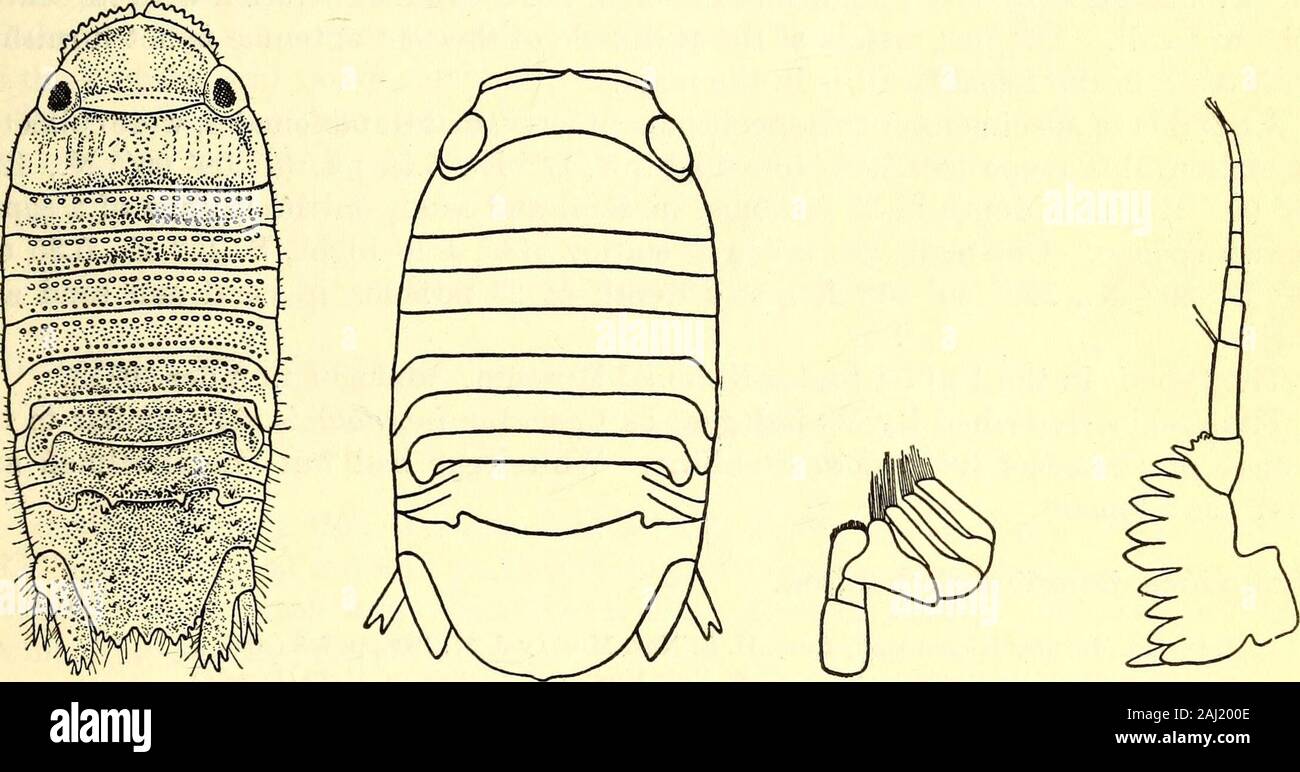Marine isopods collected in the Philippines by the U.S fisheries steamer Albatross in 1907-08 . nly one specimen, a female, was collected, at station 5268, Matocot Point, S. 50° E.,5.80 mi. (13° 42/ 00 N., 120° 57 15 E.), at a depth of 170 fathoms, in sand andpebbles. The type is in the United States National Museum, catalogue number40917. A number of young Cymothoidx are from the following localities: Romblon, Bongao,Bongao Islands; San Miguel Harbor, Ticao Island; Tomindao Island; Busin Harbor,Burias Island; Panabutan Bay, Mindanao; Port Binanga; Nasugbu, Luzon; andstation 5128, Nogas Island

Image details
Contributor:
The Reading Room / Alamy Stock PhotoImage ID:
2AJ200EFile size:
7.1 MB (325.6 KB Compressed download)Releases:
Model - no | Property - noDo I need a release?Dimensions:
2182 x 1145 px | 36.9 x 19.4 cm | 14.5 x 7.6 inches | 150dpiMore information:
This image is a public domain image, which means either that copyright has expired in the image or the copyright holder has waived their copyright. Alamy charges you a fee for access to the high resolution copy of the image.
This image could have imperfections as it’s either historical or reportage.
Marine isopods collected in the Philippines by the U.S fisheries steamer Albatross in 1907-08 . nly one specimen, a female, was collected, at station 5268, Matocot Point, S. 50° E., 5.80 mi. (13° 42/ 00 N., 120° 57 15 E.), at a depth of 170 fathoms, in sand andpebbles. The type is in the United States National Museum, catalogue number40917. A number of young Cymothoidx are from the following localities: Romblon, Bongao, Bongao Islands; San Miguel Harbor, Ticao Island; Tomindao Island; Busin Harbor, Burias Island; Panabutan Bay, Mindanao; Port Binanga; Nasugbu, Luzon; andstation 5128, Nogas Island (W.) N. 6° E., 32.50 mi. (9° 52/ 10 N., 121° 49 35 E.);Varadero Bay, Mindoro; Port Matoloi, Luzon; Batanavan Island; Endeavor Strait;Sablayan Bay, Mindoro; Mansalay, Mindoro. Family SPH^EROMIM.Genus CYMODOCE Leach. Cymodoce longistylis Miers. Cymodocca longistylis Miers, Zool. Coll. of the Alert, 1884, p. 305-306, pi. xxxin, fig. c. Locality: One specimen, a male, from Tomindao Island anchorage, electric light.Mierss specimens were from Thursday Island, Torres Straits, and Singapore.. a b c d Pig. 26.—Cymodoce multidens. a, Male, X9|; b, female, X14£; c, maxilliped, X27i; d, first antenna, X27J. Cymodoce multidens, sp. nov. This species is very close to Cymodoce tuberculosa Stebbing, « but differs in having theanterior margin of the head produced in one small median point instead of two; inhaving the first article of the first pair of antenna? furnished with a row of nine teethinstead of five and an additional tooth just anterior to the row, situated at the proximalextremity of the joint; in having one tooth on the second article of the first antennae;in not having the first abdominal segment produced backward in two prominentposterior projections, & but in having a small tubercle on either side with anotherjust above it. Further comparisons of the two species are impossible, because the descriptions ofStebbing, Whitelegge, and Baker differ. Stebbing says the anterior